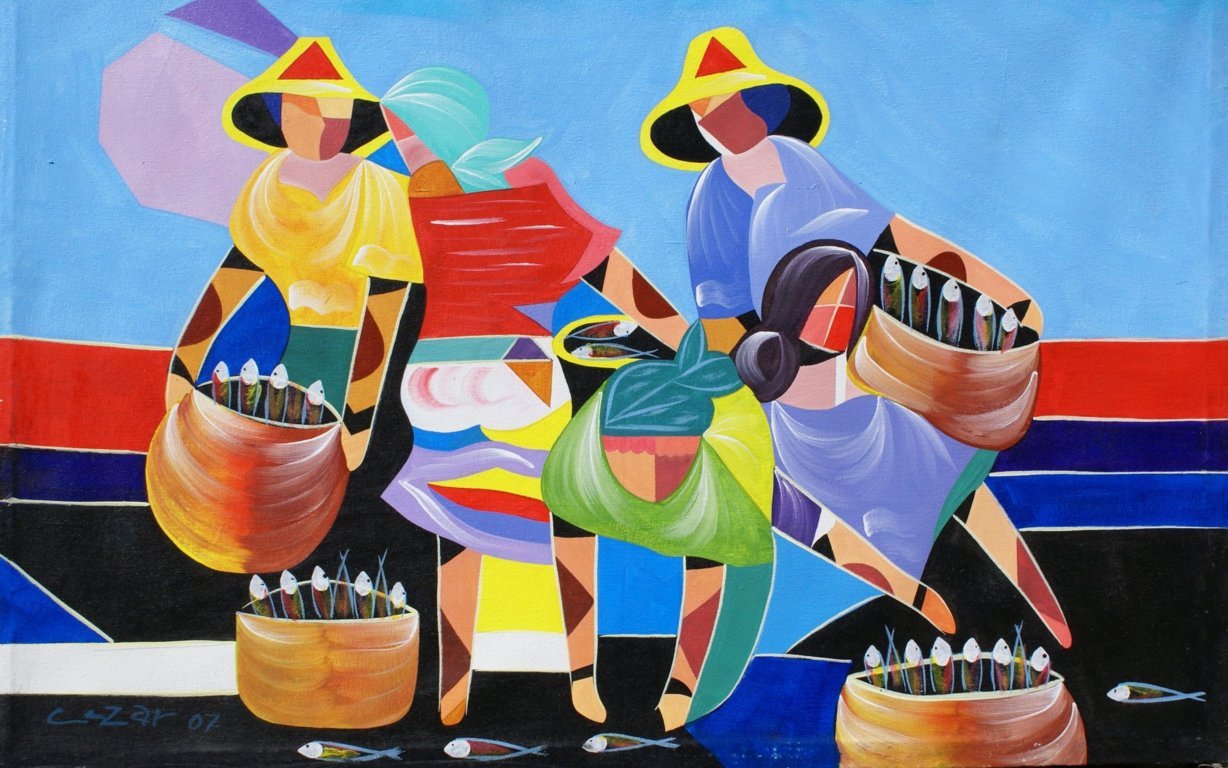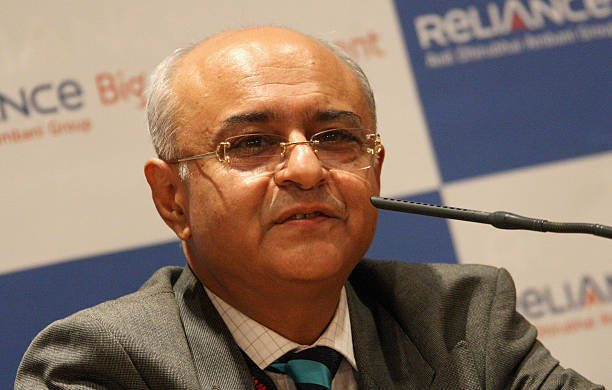
Cultural Entrepreneurship in India
by Amit Khanna December 18 2017, 5:14 pm Estimated Reading Time: 11 mins, 29 secsIndia’s cultural heritage goes back over 5000 years even before the much discussed Indus Valley Civilization. Since the advent of recorded history there is enough evidence to suggest that for several millennia India has been bedrock of culture both rich and varied. Music, dance, drama, art and sculpture, architecture, literature, cuisine has thrived in various regions of the country. To understand the complexity of India just note that there are 30 languages, people of every ethnicity and religion. Like Europe it offers a smorgasbord of different sub- cultures. However what has kept India thriving through eons is shared vision of an idea that is India. It has given birth to 4 religions –Hindu, Buddhists, Jain and Sikh and has in different eras an attraction of other faiths sometimes as an evangelical destination and sometimes as a conquest. For example India has over 140 million Muslims and 25 million Christians along with Sikhs, Jains, Parsis and others living with over 800 million Hindus in a comparatively peaceful coexistence notwithstanding an occasional skirmish. There is as they say, a bit of the world in everything cultural here.

source:All About Happy Life Painting By Cesar F.Balgot
Even today the composite culture of a Hindu majority nation has remained largely pluralistic. In the ancient spiritual texts of 4000 BC, the Vedas referred to it as “Vasudeva Kutumbakam” -the world is our family. India is home to several ethnicities from Caucasian to Romano gypsies, from Mongoloid to indigenous tribes and Southern (Dravidian) Pre Aryans. India became the world’s first melting pot of cultures eons ago. A string of invasions starting with Alexander the Great in 4th century BC to successive Muslim invaders from 10th century AD till the 18th century followed by European colonialists including, Portuguese, Dutch, French and most importantly the British have left behind traces of their roots as they intermingled with the locals. Today’s India has been enriched by centuries of cultural influences from across the world though with passage of time and a unique synthesis has created the unique Indian identity.
Entrepreneurship in arts and culture is an economic as well as sociocultural activity, based on innovation, exploitation of opportunities and risk-taking behaviour. It is a visionary, strategic, innovative and social activity”, says Canadian scholar Lidia Varbanova (2013). This is arguably how it happened in India too. Culture in its early days was largely dominated by the Clergy (Brahmins) or priests who determined what to be when. Most creativity across art forms had religious or mythological overtones. About 2000 years later the Kings and other royals and their sataraps. Some encouraged Architecture (Mughal Emperor Shah Jahan who built the Taj Mahal). Others became patrons of singers and dancers (Gupta Dynasty, the Cholas) and still others supported literature, art and craft. With it continued pretty much like this till India got independence in 1947. While the India’s first Prime Minister Jawaharlal Nehru did found important Cultural institutions like the Sahitya (Literature), Sangeet Natak (Music ,Dance and Drama), Lalit kala(Fine art) Academies, National School of Drama, the two Institues of films and TV in Pune and National Muesum and National Gallery of Modern Art which was more of intellectual pursuit. These National and some provincial academies did offer scholarships and awards and hold Cultural Festivals; they were seldom involved in funding creativity.

source:GETTY IMAGES
A unique aspect is that since early days, Indian culture has been in the hands of individuals or groups of private investors. Since independence some of the earlier State and Royal patronage got transferred to Government and subsequently also private companies and trusts but largely the onus of creative industries transferred independent funding. This is why India is one of the few nations in the world where Government financing is little and if the rich culture is still thriving it is because of cultural entrepreneurship. Artisanship for centuries till today is highly developed and practised. Various genres of dance, drama and music from contemporary to traditional are still poular especially in rural areas.

source:baker mckenzie
Again given its size and complexity India has remained multicultural. Every district and there are over 500, has its own dialect, folklore and tradition. There are for example over 200 films made each year in Tamil and Telegu and several dozens in Marathi, Bengali, Punjabi, Malayalam, Bhojpuri, Oriya and 20 other languages besides 300 in the Hindi language. Radio and TV broadcast in over 20 languages. India has just 400 news channels and another 400 in all genres is quite extraordinary. Each of the major Indian language has more adherents than the national language of most nations. It may be surprising to you but there are more English speaking people in India than any other country. There are 2 main schools of classical music and 5 major classical dance forms. There are over 50 types of major folk music and dances. Even the traditional art and pottery remained a private enterprise with virtually no state support.
The power of culture is often not felt immediately. It slowly permeates into our day-to-day life. Cultural power is glacial.it moves slowly but with great force. Of course in a networked world where travel and communication is easier than earlier some cultural leit motifs become obvious. Thus we use words like “soft power’ or ‘smart power’ as analogous with the power of culture.
A classic example would be Hollywood which has become all pervasive around the world. Or Chinese food. Or Yoga. And a host of transnational iconic people and products have emerged from Coca Cola to Apple from Michael Jackson to Jackie Chan. With an estimated turnover of USD 2.4 trillion annually culture (and this excludes tourism and travel) is one of the World’s largest Industry. France for instance draws over 85 million tourists every year mainly because of its heritage and cultures but India a mere 22 million. Its distinctive cuisine, fashion and art amongst other things are rich and diverse and we have woken up only now, to marketing our food, fashion and heritage. In fact cultural power has never been understood either by the government or the Industry. When I go abroad people always ask me about Bollywood .This is the power of culture. It can overprint on other peoples ‘minds images, sounds, taste and smells of another nation and in the process monetize an intangible asset or undermine another.
We have heard in the past two decades various people around the world including most recently Indian Prime Minister Narendra Modi have talked about India as a soft power. India’s soft power has rare characteristics when compared with the other great powers of the emerging multipolar world: U.S., China, Russia, Japan and Europe (as a unified entity). Its relatively neutral, non-threatening image, nuclear weapons notwithstanding makes India a uniquely attractive great-power partner for countries looking to hedge against future fallout between the U.S. and China, and not wanting to antagonize either superpower.
Historically the rise of India’s soft power is ancient. Some symbols are the Vedas (amongst the oldest written texts in the world) and Buddhism especially after its spread across Asia, 2500 years before Christian faith. For the Mesopotamian, Roman and Greek Empires India’s soft power was its aura of being the land of knowledge, riches, fabrics and spices. Hence the continued pursuit of trade with India followed repeated invasion of India. In the last 100 years, the most powerful expression of Indian soft power was again, a galvanizing idea: Mahatma Gandhi’s notion of nonviolent resistance to colonial rule captured the world’s imagination and inspired others who struggled against oppression, from Martin Luther King Jr. and Nelson Mandela to Lech Walesa and Aung San Suu Kyi to Obama. From Tagore to other Nobel laureate like Dr Hargobind Khorana, Dr Amartya Sen or the more recently Kailash Satyarthi and authors like Salman Rushdie ,Anita Desai Ruth Praver Jhabwala, Jhumpa Lahiri and Vikram Seth to name a few. Sportspersons like Viswanathan Anand, Sachin Tendulkar, Leander Paes, Sania Mirza and Saina Nehwal; we have produced several world heroes.
Arguably India’s best known global brand today is Bollywood (incidentally so named by yours truly). Around 50 years ago; Indian cinema began to attract fans across the world, especially in Africa, the Middle East and Eastern Europe. In 1957, ‘Mother India’ became an international hit, one of the first not produced in the US or Europe. Actor-director Raj Kapoor was mobbed on the streets of Moscow and Beijing. His brother Shammi became a heartthrob in Baghdad. Dev Anand, Dilip Kumar (Asia, Middle East) and later Guru Dutt and Satyajeet Ray achieved global acclaim. In 2003, when three Indian truck drivers were kidnapped in southern Iraq, a tribal sheikh offered to arrange their release—if he got a phone call from Asha Parekh). From the 1970s, Bollywood superstars Amitabh Bachchan and Sharukh Khan have huge fan following across borders. Sharukh getting mobbed by raving mobs in several cities of the world like London, New York, Dubai and Berlin is not uncommon. Aamir Khan, Salman Khan, Irfan Khan, Priyanka Chopra, Deepika Padukone are amongst those who have a large overseas following. Indian songs from Raj Kapoor’s Awara (Vagabond) - Awara Hoon and Mera Joota Hai Jaapani to recent item numbers are now routinely heard in cabs, cafes and night clubs around the world. I was once in Iceland and pleasantly surprised to hear one of my old lyrics, Chalte Chalte (1975) booming from a restaurant. Unfortunately besides talking the Government has done precious little to market this globally. It’s been largely cultural entrepreneurs who have done the trick.
For decades India’s image abroad was of an old civilization living in abject poverty amidst squalor. A land of snake charmers and swamis. Rarely featured in the Western cultural scene, besides an occasional mention of Ravi Shankar and his famous followers like Beatles or an assortment of spiritual gurus such as Mahesh Maharishi Yogi and Osho with their celebrity disciples to Deepak Chopra and Sri Sri Ravi Shanker. Packaged exotica or the Nehru Jacket, and now the 'bundi' or waistcoat that Modi has triggered a revival in, are scarcely known outside India or its Diaspora. Fashion trends like Bleeding Madras or Rajasthan mirror work and lately sardonic bling are symbols of India’s rising influence as more and more Indian designers are designing Haute Couture and selling abroad.
But the most remarkable fact is India is the only market which has been able to withstand Hollywood (it gets a mere 5% Box Office) and American music and Television programming. This despite the India has a potential audience of 1.2 billion people. This has worked both ways. It has created a huge market but also led Indian creative industry to keep looking inwards. This is changing slowly specially now, that besides the large diaspora (50 million) Indian culture is gaining acceptance in global markets. Films like Lunchbox are transcending Western Markets. Also India has Audio-Visual treaties with over 20 countries including with most major European countries. Co productions from France and Britain are increasing every year.
Or take another example Indian food. There is hardly any major city around the world where you can’t find more than one Indian restaurant. In fact in the UK chicken tikka masala is the National dish. In the US, people who couldn’t place the country on a map, can taste Indian cuisine from around the country. India also began to crop up more frequently in the Western cultural scene, perhaps most memorably in the form of the Simpsons character Apu Nahaseemapetilon, owner of the Kwik-E-Mart. Indian stars regularly feature in Hollywood films, Co-Productions and International TV series. Indian fashion too is slowly making inroads in the international markets.
The state since Independence has largely left Culture alone. Besides running National Academies music and drama, fine arts and literature and giving out some scholarships and awards and holding a few festivals, the Government does not fund culture. Some Government owned companies may occasionally do it but by and large culture has depended on private sector funding. There are no subsidies or incentives and inspite of this India is the largest producer of films, largest pay TV market, one of the biggest markets of recorded music. Unlike Europe, in India it is local cinema, TV and Music which has 90% of the market. Hollywood and major TV channels have to rely on their local subsidiaries to make indigenous product. Recently India is also emerging as a major player in the Digital space. This is one area where there is exponential growth and is one the few Industries which receives Government support and incentives.
From 1902 cinema has remained privately funded with very little Government incentive or subsidy. In fact Entertainment was recognised as an Industry only 20 years ago which then made bank and Institution finance available to it. Today all Major Global Companies have a strong Indian presence. Radio and TV were state controlled till 3 decades back is now dominated by entrepreneurs. Newspapers have always been and continue to be privately owned. As India has no quotas or restriction on foreign capital or content (except majority ownership in local news channels) it should be the focus of all global artistes, performers and businesses. With the fastest growing economy in the world (7.5 % per annum) and a population of 1.2 billion people with over 600 million of those below the age of 30, India is already the largest producer of films in the world, 2nd largest Pay TV market, has 1 billion Mobile phones, 400 mobile Internet subscribers. It is expected to be the 3rd largest economy in the world in 2030 India is the future market of choice of all players in the creative game. Independent, growing and Entrepreneurial.
As first published in the Financial Chronicle.





-173X130.jpg)
-173X130.jpg)
-173X130.jpg)
-173X130.jpg)
-173X130.jpg)
-173X130.jpg)
-173X130.jpg)